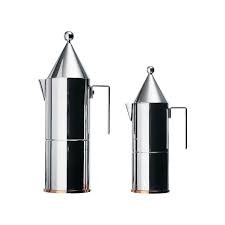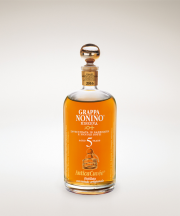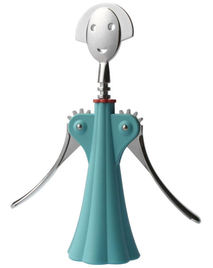 Many firms that emerge or grow as a result of radical technological progress owe a lot – maybe everything – to their technical occupations, and in return give them both formal power and informal status and gratitude. Often the same firms find that these engineers have lost importance because the technology is now developed, and the next step forward is to find ways of entering new markets or strengthening current market positions. Engineers don’t know how to do that; the marketing department does. So can firms really shift authority away from the source of their success to the new path to success? Often the answer is no, as seen in firms applying technological innovations that ignored marketing challenges – such as Sony’s continued development of disk-based music players after flash media enabled firms to make compact players like the iPod. But there are also successful cases, and a forthcoming article in Administrative Science Quarterly by Emily Truelove and Katherine Kellogg explains one mechanism. They followed a car-sharing company that made a strategic shift to marketing following a period of strong engineering success based on radical innovations. This was a classic case of a firm with engineers as a powerful occupation with a track record of success and professional norms that are completely different from the new leaders in marketing. They had all opportunities to resist, which they did – until they suddenly started making compromises. What happened? The firm had engineers that were either radical or moderate in their views on the role (and power) that engineering should have and the type of engineering that was needed. They also had radical and moderate marketing professionals. The battle between engineering and marketing alerted engineers to the difference between marketing people, and the radicals were seen as such a great threat that the moderate engineers started collaborating with the moderate marketers. So, the firm was reconfigured from an engineering versus marketing battle to a moderate-moderate collaboration with radicals on both sides out of the loop, in both power and product/market development. This is a very nice illustration of how power struggles in organizations can get resolved. It also is a point that harks back to classical organizational theory. Back in the days of Cyert and March, the Behavioral Theory of the Firm introduced the concept of a dominant coalition, and suggested that managers could be very astute in forming coalitions. Indeed they can – as Truelove and Kellogg pointed out, the dominant coalition can shift from a department to a cross-department collaboration. Truelove, Emily and Katherine C. Kellogg. 2016. The Radical Flank Effect and Cross-occupational Collaboration for Technology Development during a Power Shift. Administrative Science Quarterly, forthcoming.  I don’t want to get too personal, but I am tempted to suggest that you own some product or products made by Alessi – products that make you feel vaguely artistic and unique even though they are mass produced and sold to millions of people. If you are familiar with the history of Alessi, you may know that these products are radically different from their original collection of serving tools for the food and hospitality industry, a classical low-margin high-volume good with professional buyers. From the design of the Alessi good you own – and the price – you have probably guessed that it is a high-margin good. And you are not a professional buyer of household goods. How did Alessi make this change in product focus? This is the topic of an article in Administrative Science Quarterly by Elena Dalpiaz, Violina Rindova, and Davide Ravasi. They show that, interestingly, this move into a much more profitable and “cushy” market segment was controversial and complex. Professional serving tools are designed differently, made differently, and marketed differently than the artistic goods that Alessi now focuses on, so this was a change in philosophy and in skills. Their article explains how this was done, and how other firms can learn from the transition, giving a full picture of how a complex change process was done. I will just tell you one element: the role of the amphibious coffee maker. What makes a coffee maker amphibious? It can live in two environments, moving smoothly from kitchen, where it functions well, to living room, where it looks good. Amphibious products, both concept and actual product, were used internally in Alessi to explain the strategic change. They were used externally to guide customers along the path from a set of truly artistic (but less useful) products that were sold in small numbers in the transitional period to the mass-produced and more useful (but still pricy) products that Alessi wanted to sell. This is a very important insight. Amphibious products created a bridge in the customers’ mind between the artistic and the useful. With this bridge in place, the customer was willing to adjust the price range paid for a coffee maker, or an egg stand, or a wine bottle opener. Amphibious products also created a bridge in the organization between its origin as a maker of mass-produced serving tools to its destination as a maker of artistic household goods. Alessi’s products were now amphibious; Alessi was now amphibious. Truly an interesting success story. Dalpiaz, Elena, Violina Rindova, and Davide Ravasi. 2016. Combining Logics to Transform Organizational Agency: Blending Industry and Art at Alessi. Administrative Science Quarterly, 61: 347-392.  You probably know someone who owns an Apple Watch, or maybe you own one yourself. Is it a creative idea? Well, the multi-function watch was creative the first time it appeared in Science Fiction writing, but that was long time ago. Technologically a watch with the Apple Watch functionality has been possible for a while too, but firms have waited because they were unsure if it could become a success. If fewer and fewer people wear watches, because smartphones do the same job and much more, why make a watch? In fact, the potential for success of Apple Watch was in dispute as soon as it was launched, and it is still not settled. This is an issue that surfaces again and again – firms need to estimate the potential success of ideas, both creative ones and more conventional ones. In a forthcoming paper in Administrative Science Quarterly, Justin Berg looks at that question through a new lens: who makes the best estimate? Is it managers (who make the decision), creators (who come with ideas), or people generally (who could be customers)? The question is important because it reflects an ongoing tension in firms. Creatives think that managers don’t have the right kind of thinking to appreciate their work, and managers think that creatives are poor decision makers, especially when evaluating their own work. Theoretically the key difference is between the divergent thinking that underlies creativity, and the convergent thinking that underlies analysis and decision making. What kind of thinking fits what kind of task is a good topic for discussion over drinks, but we won’t know the answer without studying it, as Berg did. To make sure the creative content was easy to evaluate, he used proposed circus acts, and drew creators and managers from the industry (yes, of course there is a circus industry). The answers are easy to summarize, and important too. The creators are right: They are much better at assessing creative success than managers are. In fact, managers could be the worst, with laypeople doing better in one measure of assessment accuracy. The managers are right too: Creators are bad at assessing the success of their own work (you get no points for guessing that they over-estimate it). Even more interesting, a creator with a strong past success is especially bad at assessing, probably because of overconfidence. This gives a good rule of thumb for those who will become managers at some point: If a creator says, “I know product idea this will success/fail because [insert own success story here]”, you know exactly who to ignore. But the other rule of thumb is to ignore yourself. Have the creators assess each other’s ideas, or you can’t do that, use laypeople. Berg, Justin M. 1996. Balancing on the Creative Highwire: Forecasting the Success of Novel Ideas in Organizations. Forthcoming, Administrative Science Quarterly.  Let me start this post with a confession. I like whisky and think the different types taste very different from each other, I also like cognac but can’t tell them apart well, and different types of grappa I can tell apart but don’t really have an opinion on which ones are better. OK, so now you know my bias, which is important for what follows, and many of you have probably made an assessment of how (un)cultured I am. But here is something to think about first: why did I mention grappa along with the other two alcohols? A few years ago, that would have been pretty insulting to whisky and cognac, but now it is natural at least among some people. And that is a big change with some importance outside drinking too, for example for management. In a paper forthcoming in Administrative Science Quarterly, Guiseppe Delmestri and Royston Greenwood write about the Cinderella-to-Queen transformation of grappa, and what it means for our understanding of categories in general, and specifically organizations in markets. Their paper is great in its description of how a dilemma for grappa producers, and their solution to it, solves a puzzle for researchers: why do different product types have different status rankings, and how much does that change over time? Grappa was cheap booze for the underclass. That was not ideal for grappa makers, who very much would have liked higher prices. But as long as rich people everywhere – in Italy too – though that grappa was no good, preferring other alcohols instead, that was not going to happen. Some grappa producers were able to find a path to higher status. It involved failed attempts and even a bankruptcy, and exactly that combination of failure and eventual success let Delmestri and Greenwood work out the process. The paper has much more detail than I can give here, but the short story is that a rise in status involves distancing from the low-status past and present (detachment), copying of related high-status products (emulation), and connections to the broader society (sublimation). All needed to be done, and the “raw materials” for all needed to be present. The story of grappa’s rice to high status is interesting because it shows exactly how customers can change their minds when all the right levers are pulled. It took bottles designed to resemble perfume flagons, single-grape distilling and regional labeling, and linking to Milanese high fashion to make grappa fashionable and prestigious, but it could be done. I think the story is also interesting because it suggests some conditions that need to be present for it to work. Grappa became high status after a long campaign. Can any regional or local product accomplish the same? Before you say yes, consider this: Italy is a pretty cool place, so grappa had a good starting point. Delmestri, Guiseppe, and Royston Greenwood. 2016. How Cinderella Became a Queen: Theorizing Radical Status Change. Administrative Science Quarterly, forthcoming. Presumptive GOP presidential nominee Donald Trump labeled President Obama “Kenyan” and claimed he was born outside the US, and has also tweeted a picture of presumptive Democratic presidential nominee Hillary Clinton with the text “Corrupt” and a red (not yellow) David’s star. What does that have to do with the title of this blog? Well, people’s perceptions are colored by associations, and many have negative views of Africans (and African Americans) and Jews. And Asians (and Asian Americans).
So how to get a job if you belong to any group that is subject to discrimination? Discrimination is well known, and both individual students and university career service employees know the answer. A resume can be “whitened” by removing signs such as a distinctive African American or Asian name, and by removing work experience or volunteering naming (or even entire activities) that gives out racial signs. I know people who have done it. It is disturbing both to them and to their friends, not least because any kind of resume tampering has ethical implications, and the idea that one can improve the odds of getting a job by removing mention of volunteer work is so obviously wrong, even if it is correct. In a paper forthcoming in Administrative Science Quarterly, Kang, DeCelles, Tilcsik, and Jun examine both how and why people whiten resumes, and the effects it has. Let me start with the most shocking finding. Not only does whitening work, by giving higher likelihood of a callback (we knew this from prior research), but it works equally well for firms that signal a commitment to diversity. So, firms that say they value diversity are not truthful. But, students believe them, so they will engage in less whitening of their resumes when the employer has job listings that signal that they value a diverse workforce. Ironically, this turns statements on the value of diversity in job listings into a trap for job seekers, who will not whiten their resumes and suffer discrimination. The study also provides insight into the thinking behind whitening through a series of in-depth interviews on how it was done, and why students would or would not whiten resumes. First, it was clear that whitening meant breaking a barrier: students believe in meritocracy, and value their own identity and experience. Doing it is as unpleasant as it sounds. But still, many (not all) students knew the risk of not getting callbacks if their resumes were not white enough, and chose to do it. The techniques used were largely truthful: A “white” hobby could be added, and “Black” or any Asian markers could be removed from voluntary organization names. More radically, an Asian student could replace the given name with a chosen whitened one, or use both, and an African American student could pick the least black-sounding name even if it was a middle name not normally used. The findings are remarkable and discouraging because they are from the USA, which is one of the most diverse and meritocratic job markets in the world. One might hope that time will work against the discrimination that gives a need to whiten, but then again, political and social signals are currently not encouraging. Kang, Sonia K., Katherine A. DeCelles, Andras Tilcsik, and Sora Jun. 2016. Whitened Resumes: Race and Self-Presentation in the Labor Market. Administrative Science Quarterly, forthcoming. |
Blog's objectiveThis blog is devoted to discussions of how events in the news illustrate organizational research and can be explained by organizational theory. It is only updated when I have time to spare. Archives
January 2024
Categories |

 RSS Feed
RSS Feed